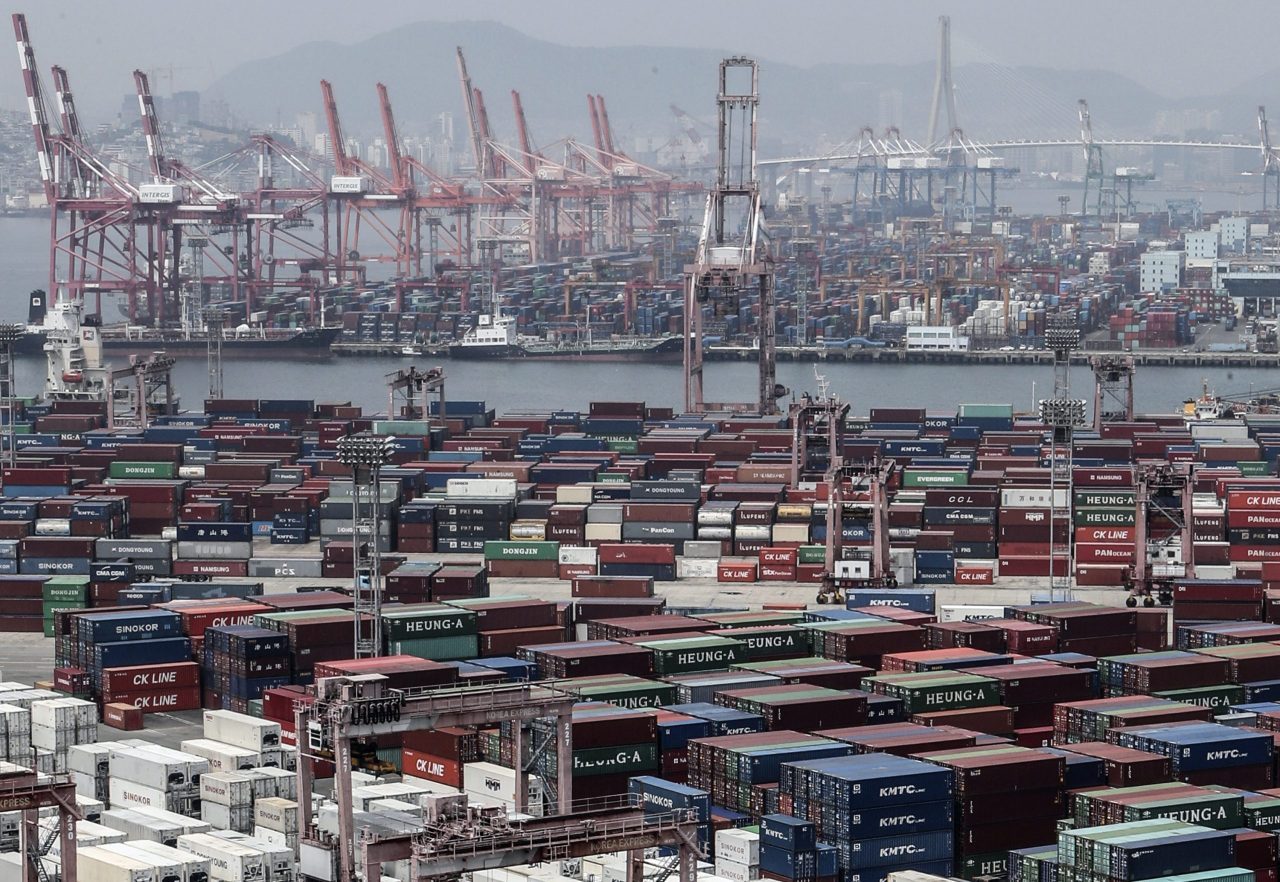 |
This file photo, taken June 4, shows stacks of import-export cargo containers at South Korea's largest seaport in Busan, 450 kilometers southeast of Seoul. (Yonhap) |
South Korea’s current account surplus, a key barometer of the nation’s trade, surpassed $10 billion for two consecutive months and hit a three-year high in October, the central bank said Friday.
The surplus increased 48.9 percent on-year to $11.6 billion in October on the back of recovering exports, despite the coronavirus pandemic, according to the Bank of Korea.
It marked the largest surplus since September 2017, when the corresponding figure stood at $12.3 billion, and the third-largest since the BOK started compiling the data in January 1980.
With the BOK anticipating a 2020 surplus outlook of $54 billion, the latest figure is likely to add to the surplus momentum that has continued for six months. The current account went into the black in May after Asia’s fourth-largest economy saw its largest deficit in nearly a decade in April, when it was $3.33 billion in the red.
Exports, which account for half of the Korean economy, dropped 4.3 percent on-year overall to $46.9 billion in October, but daily average outbound shipments stood at roughly $2.2 billion, logging their first increase in 23 months. It was driven by a recovery in semiconductor and auto exports, which are Korea’s key export items.
Imports, however, declined 10.3 percent on-year to $36.8 billion due to declining prices of energy sources such as oil and gas.
The accumulated account surplus in the January-October period came to $54.9 billion.
The goods balance improved on-month to a surplus of $10.15 billion in October, compared with a surplus of $8.03 billion the previous month.
As overseas travel remains slow, the service account saw a deficit of $660 million compared with a $1.72 billion deficit the previous month.
The capital and financial account, which covers cross-border investments, posted a net inflow of $15.94 billion in October, increasing from a net inflow of $8.91 billion the previous month. In terms of direct investment, overseas investment by Koreans and foreign investment in Korea increased to $1.1 billion and $950 million, respectively.
By Jung Min-kyung (
mkjung@heraldcorp.com)








